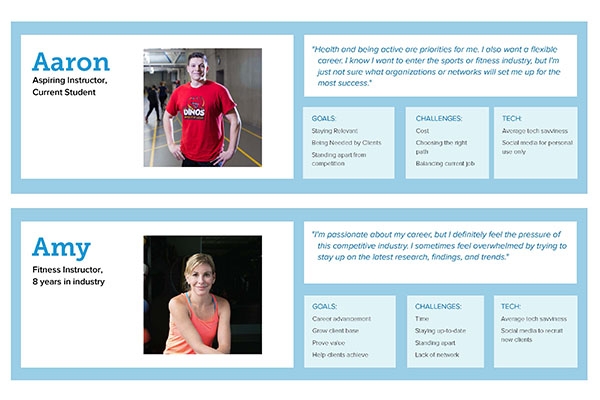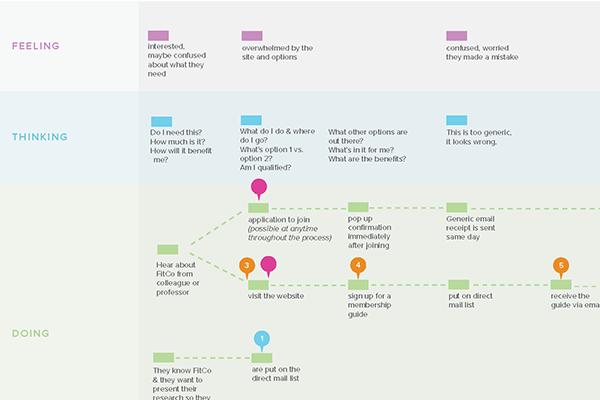When it comes to the experiences your organization delivers, “good enough” is no longer an acceptable standard. Your customers – donors, members, patients, and even employees – are being actively courted by other organizations for their loyalty and support.
Customer experience (CX)—it’s a concept that’s having a moment in the spotlight. But what does it mean and what’s the best way to deliver it?
Put simply, CX encompasses all interactions with and aspects of a brand. Products, services (online or off) are all part of a cumulative customer experience. And by customers, we mean any audience that a brand serves: buyers, subscribers, students, donors, members, even employees. In today’s world, one experience that falls short can impact brand perception, so how can you ensure your CX is up to snuff?
Step one is to better understand the current experience.
The rest of this post will walk you through a few tools we often use in customer experience design. To bring these exercises to life, we’re going to use a mock example from an organization we’ve named FitCo. FitCo is a professional association for fitness trainers. They help members connect with one another, and provide access to new research, trends, tips and other professional development opportunities.
Step 1 – Identifying Your Customers
To begin, we must try to empathize with your audiences. Our first exercise focuses on building audience personas. A persona is essentially a profile of your average audience member. For CX purposes, you may even need to create multiple personas. Focus on their challenges, goals, feelings, thoughts, and actions. Sometimes demographics are useful but understanding the emotional attributes of your audiences is most critical.

Download this persona example here.
Step 2 – Map Your Current Customer Journey
Journey mapping looks at your audiences’ experiences with your brand holistically. By mapping out the audiences’ journeys from beginning to end, you may find that there are some glaring pain points, or perhaps simple opportunities to create consistent and engaging interactions.
Full journey map example here.
Your journey map may be more or less complicated than this example. You may decide that your team would benefit from a digitized version, or that butcher paper and sticky notes will suffice.
After completing the mapping activity, it’s critical to document and prioritize pain points and opportunities. Doing so at this juncture will make the next phase of work clearer.

Opportunities & paint points example here.
Step 3 – Create a Game Plan
Now it’s time to put your understanding of CX to the test by creating a game plan. Gather your collaborators and decision makers to set some actionable goals, to create a timeline and then dive in.
There are a few key tips to keep in mind:
KEEP LISTENING
Never stop empathizing! Contintue to gather qualitative and quantitative feedback from audiences as you tackle challenges and build solutions. Focus on the areas of improvement you have identified, but also listen for new opportunities. Here is one way to accomplish that:
- Do some quick audience polling using your social media account.
- Implement a HotJar survey on your website.
- Ask respondents to polls and surveys if they’d be willing to do a follow-up phone interview.
- Reach out personally to your audiences—involve your team members to reach out to your customers, donors, students, patients, or members.
COLLABORATE
Create a task force or committee and arm them with your customer experience research and creative problem-solving methodologies. Bonus points for using the design thinking framework to problem solve.
MEASURE
Define metrics as they relate to your overall goals. Consider these questions:
- What’s your baseline?
- What are you looking to increase or decrease?
- How often will you measure?
It may feel overwhelming at first but clearly outlining and accomplishing these steps can get your team get started.
All of the exercises are also scalable based on time and resources available so give it a try to see what can work for you! At SmallBox, we urge both nonprofit organizations and businesses to utilize these tools to analyze and, ultimately, improve their customers’ experiences. By understanding your audiences and the interactions they share with your brand, you can design a distinctive experience that increases engagement and ensures retention.
Interested in learning more? Download the SmallBox Customer Experience Design Kit for a supplemental guide on the following exercises.

